The amount of energy in a hockey ball is huge… the concussion and face injury danger to goalies if not well equipped is real.
OBO designs a range of goalie helmets designed for different levels of play and different ball speeds.

The Poly P (Polypropylene) is designed to provide appropriate protection at balls speeds to 95 kph.
View the Poly P (Polypropylene) on the OBO site

The PE (Polyethylene) is designed to provide appropriate protection at balls speeds to 120 kph.
View the PE (Polyethylene) helmet on the OBO site
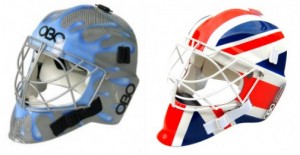
The FG (Fibreglass) or CK (Carbon Kevlar) will protect up to speeds of 160 kph.
View the FG (Fiberglass) and CK (Carbon Kevlar) on the OBO site
All the OBO helmets above are safety test approved (the Poly E designed for kids under 13 years and sold only in 3 countries is not a safety tested helmet, however our lab research shows they provide adequate protection for young players.) The amount of protection a helmet offers is a combination of the materials used in the main helmet body, the foam liners in the helmet, the cage, and several other design related / shape aspects.
Regardless of the ball speeds you face, if you want the highest possible protection we suggest you use the OBO FG (Fiberglass) or CK (Carbon Kevlar). Helmet bodies made using these materials offer the most protection, and longest life. The concussion protection offered by the OBO FG and CK is up to three times greater than some helmets on the market. Check out this video of the OBO FG in action:
Some helmet bodies in helmets sold by other brands break or even shatter.
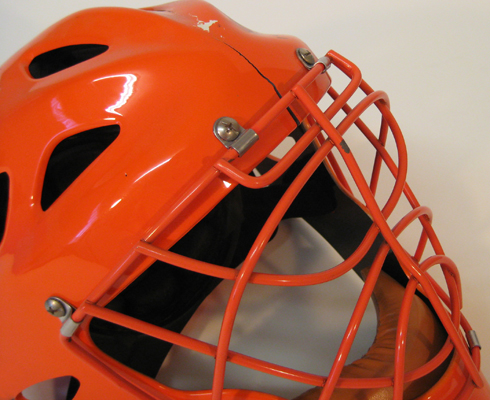
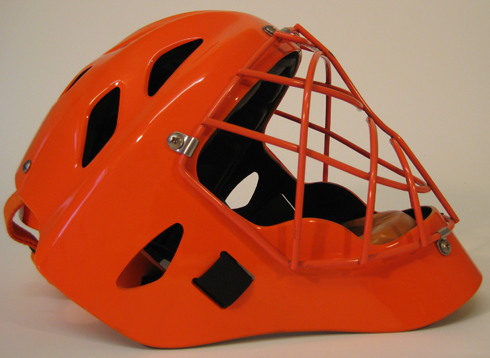
Cages are an integral part of the level of protection a helmet provides. Our cages use the highest quality steels and bend less than others.
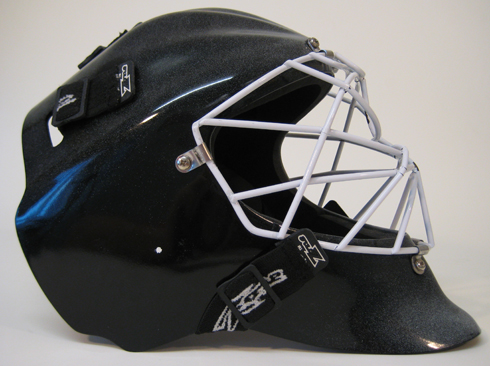
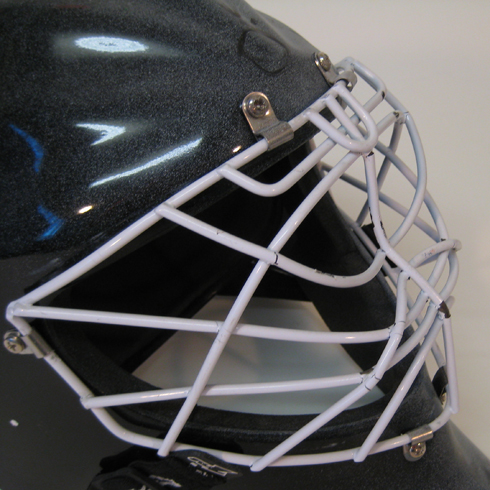
Find out more about OBO’s lab here
What do the F.I.H say about Helmets?
The F.I.H. says hockey helmets should be tested, but HOLA! Hold-up! They are not. Go ask our competitors for their test certificates. (Ours is EC type – examination certificate number E-30-01488-02, CE certified in accordance with directive 89/686/EEC, standard reference EN ISO 10256:2003 (replaces EN967:1997), technical body CEN/TC-158, Reference Mkp P004357). Yes, some of our competitors sell cheaper, untested helmets (not quite made of China, but made in China). We could do this too… we don’t because while Obo as a company is all for challenging the rules and taking risks, we draw the line at doing it with our goal keepers brains! What do you think?
Finally here is a really good video about helmets and concussions. Although its about Baseball the ball speeds and impacts are very similar to what a goalkeeper will face within hockey:












